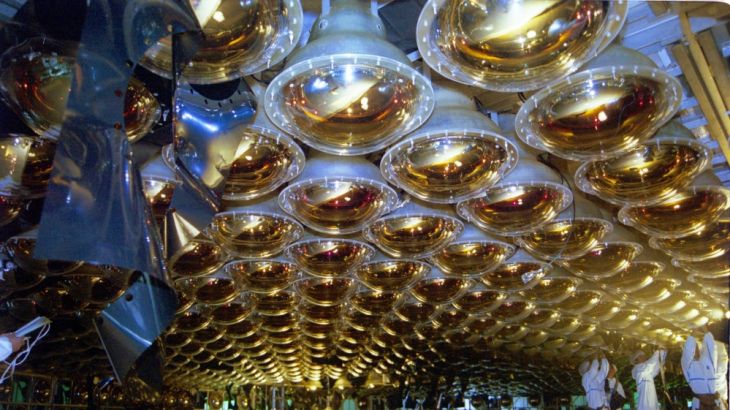Nobel Prize in physics for neutrino insights
Scientists to share $960,000 prize for their work on tiny invisible subatomic particles known as neutrinos.

This year’s Nobel Prize in Physics has been awarded a Japanese and a Canadian scientist for their work on tiny puzzling subatomic particles known as neutrinos.
Neutrinos are the second most bountiful particles after photons, the particles of light, with trillions of them streaming through our bodies every second, but their true nature has been poorly understood.
Keep reading
list of 4 itemsHong Kong’s first monkey virus case – what do we know about the B virus?
Why will low birthrate in Europe trigger ‘Staggering social change’?
The Max Planck Society must end its unconditional support for Israel
Takaaki Kajita did early work on the tiny particles at a purpose-built underground laboratory a kilometer beneath a mountain in central Japan.
Canadian Arthur McDonald was also awarded the prize. His work at the Sudbury Neutrino Observatory demonstrated that neutrinos from the Sun don’t disappear on their way to Earth, but change form instead.
|
|
| Al Jazeera visits the Sudbury Neutrino Observatory in Ontario, Canada |
Together their work overturned the prevailing theory that neutrinos have no mass, and has forced physicists to reconsider the fundamental make-up of the universe.
“This is a really big discovery,” says Barbro Asman of the Royal Swedish Academy of Sciences.
Asman says it could help explain why there is more matter than antimatter in the universe, a riddle that has eluded scientists for years.
“When matter is created, it’s created with equal amount of matter and antimatter,” she says. “So the problem we have then is why are we here containing only matter?”
Speaking by telephone to a news conference in Stockholm, McDonald said his discoveries not only gave scientists a more complete understanding of the world at a fundamental level, but could also shed light on the science behind fusion power, which drives the Sun and could one day be tapped as a source of electricity on Earth.
The scientists will share the $960,000 prize.